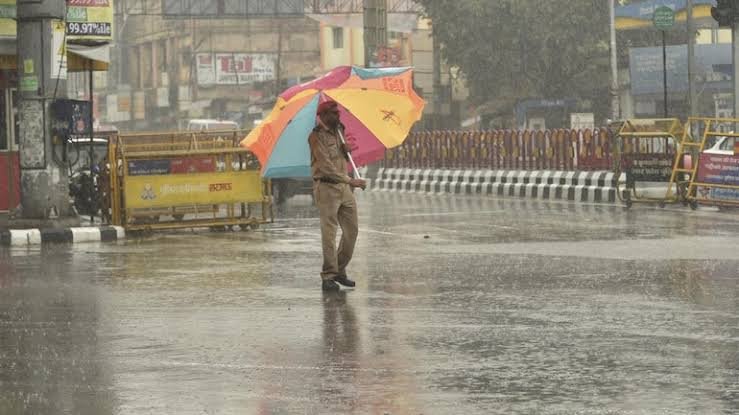To cope with extreme weather
For Printing Download Epaper from files section from bottom of this page

At least seventy nine people died on Friday due to incessant rains, floods and landslides in various districts of Maharashtra. Forty-nine of the seventy nine deaths, were due to landslides in Talai village, Raigad district, while thirty two were feared trapped in landslides in Satara and other districts in the wake of devastating rains. In recent past, in Mumbai, more than thirty people were buried under debris of landslide collapsing on slums. The incidents of water logging and closure of traffic are common in each Monsoon season. Not only in Maharashtra, in Himachal Pradesh and Uttarakhand, also there are incidents of excessive rains and flash floods. Why this is happening? The answer is not so simple as climate change. No government can free itself by giving such answer. The governments’ inability to cope with heavy rains in very short time which has become a routine phenomenon now, has been exposed umpteen times, especially in Maharashtra and in particular in Mumbai. If we see the pattern of rains in last few years, we can observe that, there has been a sea change in its pattern. The magnitude of raining in short time has become a routine affair. For example, Mahabaleshwar, a hill station in Maharashtra’s Satara district in the Western Ghats, on Friday, recorded the highest ever rainfall in its history: sixty cm in the previous twenty four hours. Mumbai continues to be battered by heavy rainfall and has been placed under orange alert (“heavy to very heavy rain at isolated places”). Other parts of the western coast, including cities and towns in Madhya Pradesh, Karnataka and Goa, have also recorded exceptional rainfall and flooding in the last twenty four hours. The India Meteorological Department (IMD) classifies rainfall as “extremely heavy” if an area records twenty cm or more in 24 hours. An offshore trough running from the Maharashtra coast to north Kerala coast is causing such heavy rains and is likely to weaken from July twenty six, said IMD. A lot of years have been passed since twenty six July, 2005 and in recent years, we are seeing more than twenty six July type rain events with horrible frequency. Our government administrations have been totally unable to cope with such extreme weather irregularities and only we are hearing some bizarre explanations like the rain was unnatural. We have become now habitual of driving cars avoiding big ditches in Mumbai roads along with water logging and absurd statements of rulers like the cloud was having nine Kilometers height etc. But, there is no word from any administration about taking measures like preparing for heavy rains in short time. Result: heavy losses of human lives and financial loss. Over the past month, India has seen several rain-related extreme weather events. Both Uttarakhand and Himachal Pradesh have seen incessant rainfall, with a flash flood in the latter. Delhi has seen some shorter, intense bursts of rain in the last few days, but only after a slow and delayed start to the monsoon. These wayward weather events carry not only the indelible sign of a surging climate crisis but are also a compelling reminder that the country is under-equipped to tackle many of its effects, such as urban flooding and flash floods. But just blaming the climate crisis will be wrong. Despite some proactive efforts by some states, India’s development plans are marked by frenzied and unregulated construction, even on flood plains, an utter disregard for natural topography and hydro-geomorphology, and poor quality affordable housing. Along with overburdened drainage, these are only exacerbating the effects of the climate crisis, leading to large-scale human tragedies and destruction of property. The governments have only blaming climate change for the disaster with avoiding their own responsibility. This will not be fair and will be an injustice to weather conditions as well as people. These extreme weather conditions have not become routine with their whims. They are the result of making uncontrolled damage to Mother nature and the unholy nexus of builders and rulers where there is a spree of construction activity from Kashmir to Kanyakumari. No administration has a desire to control or close it and we will become more and more vulnerable to such weather conditions. The real cause of disaster is our governments who are unable to plan properly in advance for the calamity and their unending greed.

 Active Times
Active Times 

















